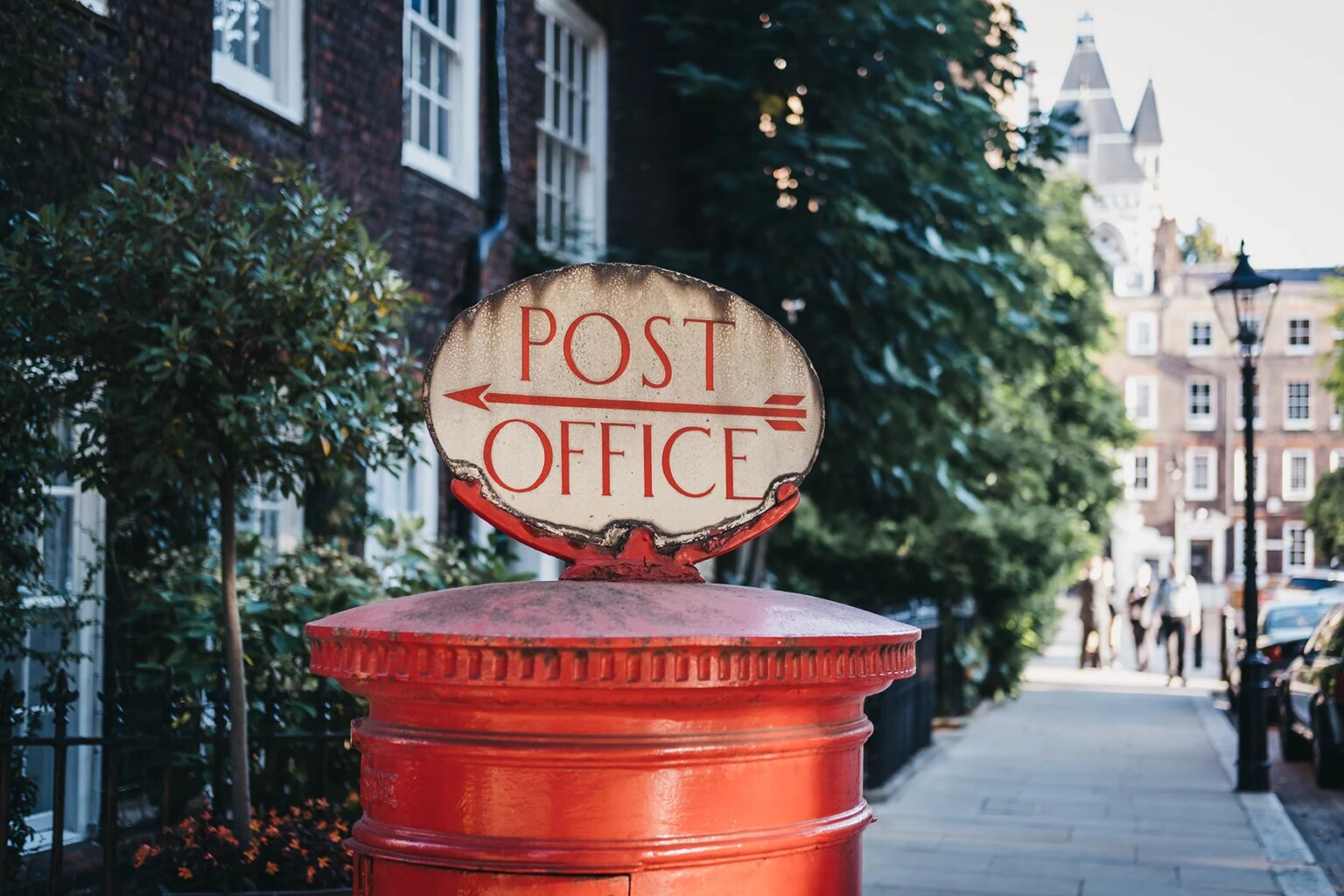Although it might seem like everything is done online these days, the postal service still plays an important role in all our lives. From paying bills to sending gifts abroad, mail services are often essential when it comes to setting up home in a new country.
However, understanding how the UK’s postal service operates can be challenging for expats. To ensure you know your postboxes from your post offices, this helpful guide includes information on the following:
An overview of the UK postal service
The United Kingdom has a surprisingly rich history when it comes to its postal service, with roots dating back to 1516. However, it wasn’t until 1660 that the state-operated General Post Office (GPO) was set up as a government department. GPO remained the UK’s communications provider until 1969. It was subsequently replaced by two public corporations, the Post Office and British Telecom (now known as BT).
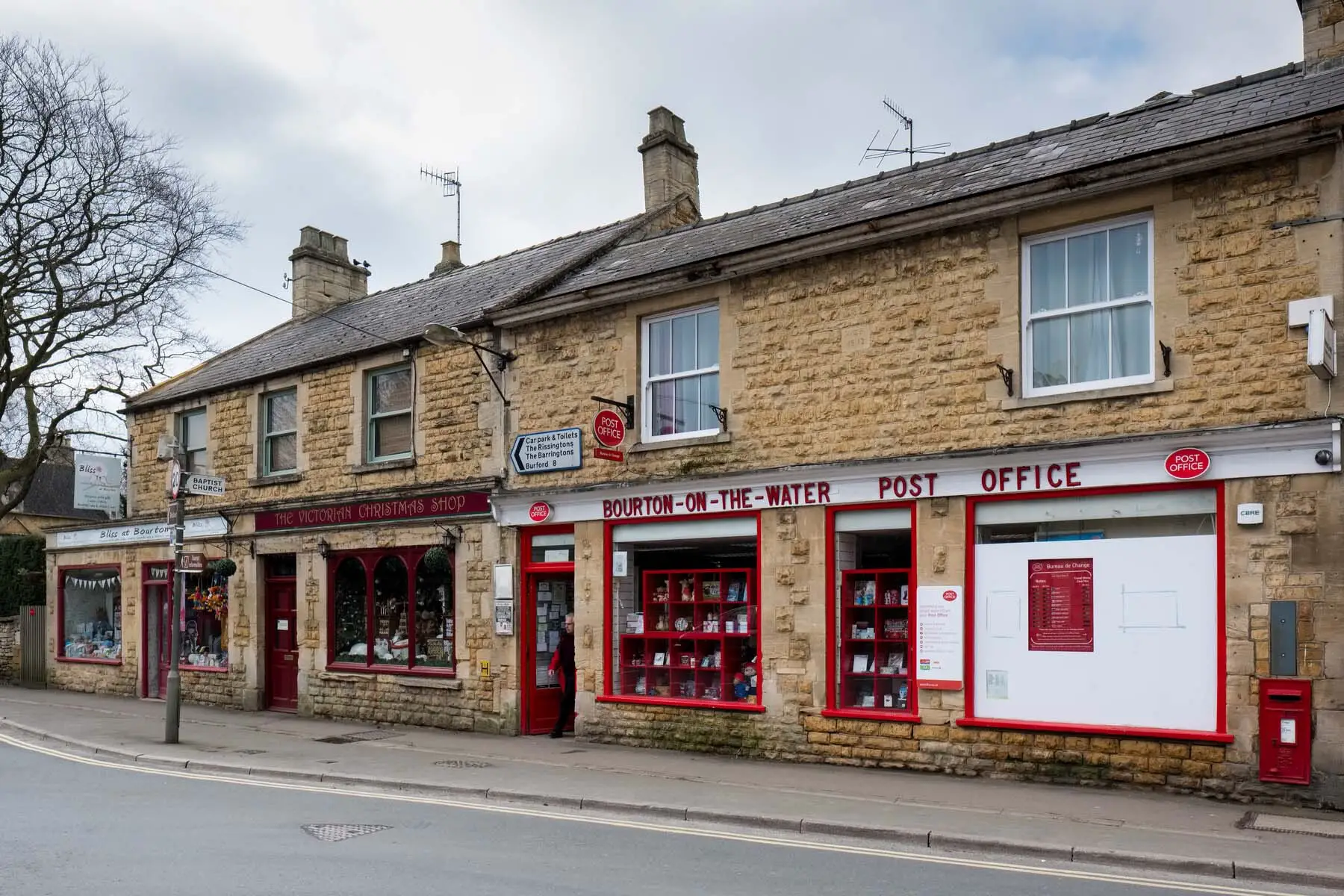
The UK’s postal sector was liberalized in 2011, opening up the country’s postal sector to competition. This saw the system’s delivery and collection services privatized, while the retail services remained state-owned. The UK’s postal service can be confusing for expats and locals alike, particularly after this recent reorganization. However, there are three main branches you should be aware of:
- Post Office – the state-owned private company that operates the UK’s 11,000-strong network of retail post offices. Some offices are managed directly, while others are run on a franchise basis.
- Royal Mail – a privately-run company operating mail collection and delivery in the UK. It also owns and maintains the country’s network of iconic red post boxes, known locally as pillar boxes.
- Parcelforce Worldwide – a courier and logistics subsidiary of Royal Mail, delivering parcels throughout the UK and around the world. It serves both personal and business customers.
There are also several other companies that provide delivery services for parcels both domestically and internationally. These include DHL, FedEx, and DPD.
Post offices in the UK
Post offices are found in every town and city – as well as many villages – across the United Kingdom. Some are standalone stores while others are located in other retail outlets, including WHSmith. Post offices are easily recognizable by their red oval signs. However, stores can get crowded during peak hours, such as lunchtime, so you may need to plan your visit accordingly. Larger stores have self-service machines to help speed up the process. Use the Post Office’s store locator to find your nearest branch.

As well as being able to mail letters and parcels, you’ll also find a range of other services in the UK’s post offices. These include banking and financial services, such as savings accounts, mortgages, personal loans, and insurance products. The Post Office also offers home internet services in the UK. Many branches also offer in-house currency exchange, alongside international money transfers through Western Union. Services differ between branches, so check ahead to avoid disappointment.
Sending mail and parcels in the UK
If you’ve got something important to mail in the UK, you’ll be pleased to know that sending letters and parcels is fairly straightforward. Your first port of call will likely be your nearest post office. Here, you’ll be able to buy postage, send mail and parcels, and access a range of delivery options. For example, if you want to use Royal Mail’s guaranteed next-day delivery or signature-on-delivery services, you’ll need to visit your local post office.
The price you pay for postage will depend on both the size and weight of whatever you want to send. For more information on these options, check out this weight and size guide. Alternatively, you can find out exactly what you can expect to pay on the Royal Mail’s service guide. You can pay in-store using cash or card. You’ll also receive proof of delivery, should you need it.
Where to buy stamps in the UK
There are plenty of places to pick up stamps in the UK, so whether you’re mailing letters or adding to your collection, you’re in luck. As well as post offices, you can also pick up first and second-class stamps in many supermarkets, newsagents, fuel stations, and some bookstores across the country. You can also buy online on the Royal Mail’s website.
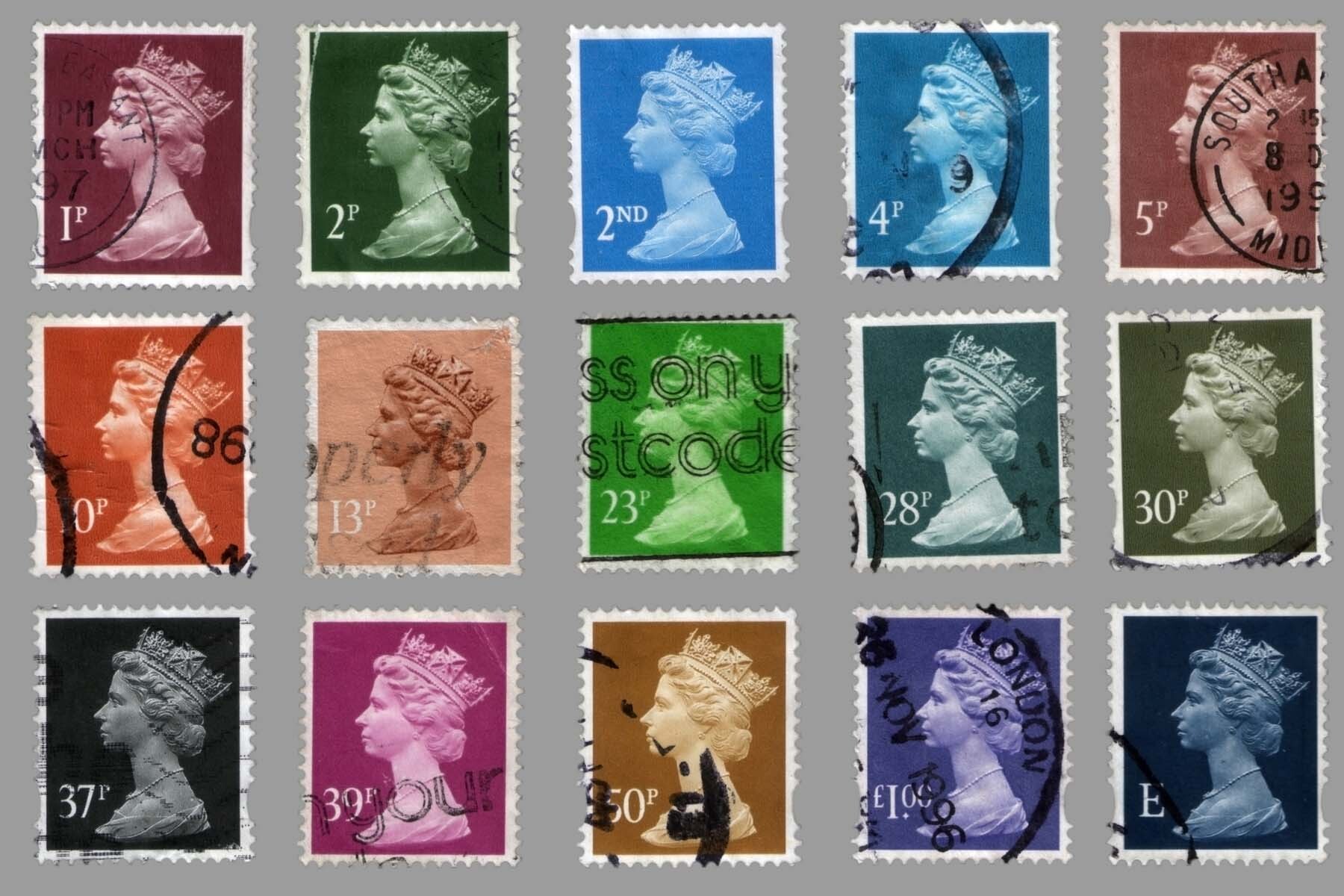
You can buy special commemorative stamps, too. Every year, Royal Mail produces a number of stamp designs celebrating everything from the UK’s sporting heroes to children’s book characters. These can be used the same as any regular stamp, although they may inspire you to start your own collection.
Postcodes in the United Kingdom
Before sending anything in the UK, you’ll need to know the postal code of the recipient, known locally as the postcode. This is an alphanumeric code of between five and seven digits, usually split into two parts. In the first part, one or two letters represent the city or postcode area (e.g., B for Birmingham, and NE for Newcastle and the surrounding region). In central London, letters indicate different parts of the city. For example, N for postcode areas in the north of the city and WC for western central areas.
Following these letters, the next one or two numbers relate to the specific district within this postcode area. Typically, numbers start in the city center and fan-out from there. However, confusingly this rule doesn’t always apply. If you’re unsure of a postcode in the UK, make sure you use the Royal Mail’s postcode finder to write the correct address.
Postboxes in the UK
The red postbox is an iconic part of UK culture. They date from 1852 when the first was installed on the island of Jersey. There are currently around 100,000 of these post boxes, or pillar boxes, across the UK. Every postbox is marked with the royal cipher of the reigning monarch. You’ll find most are marked with “ER” for Elizabeth II. However, keep your eyes peeled for older Victorian and Edwardian boxes.
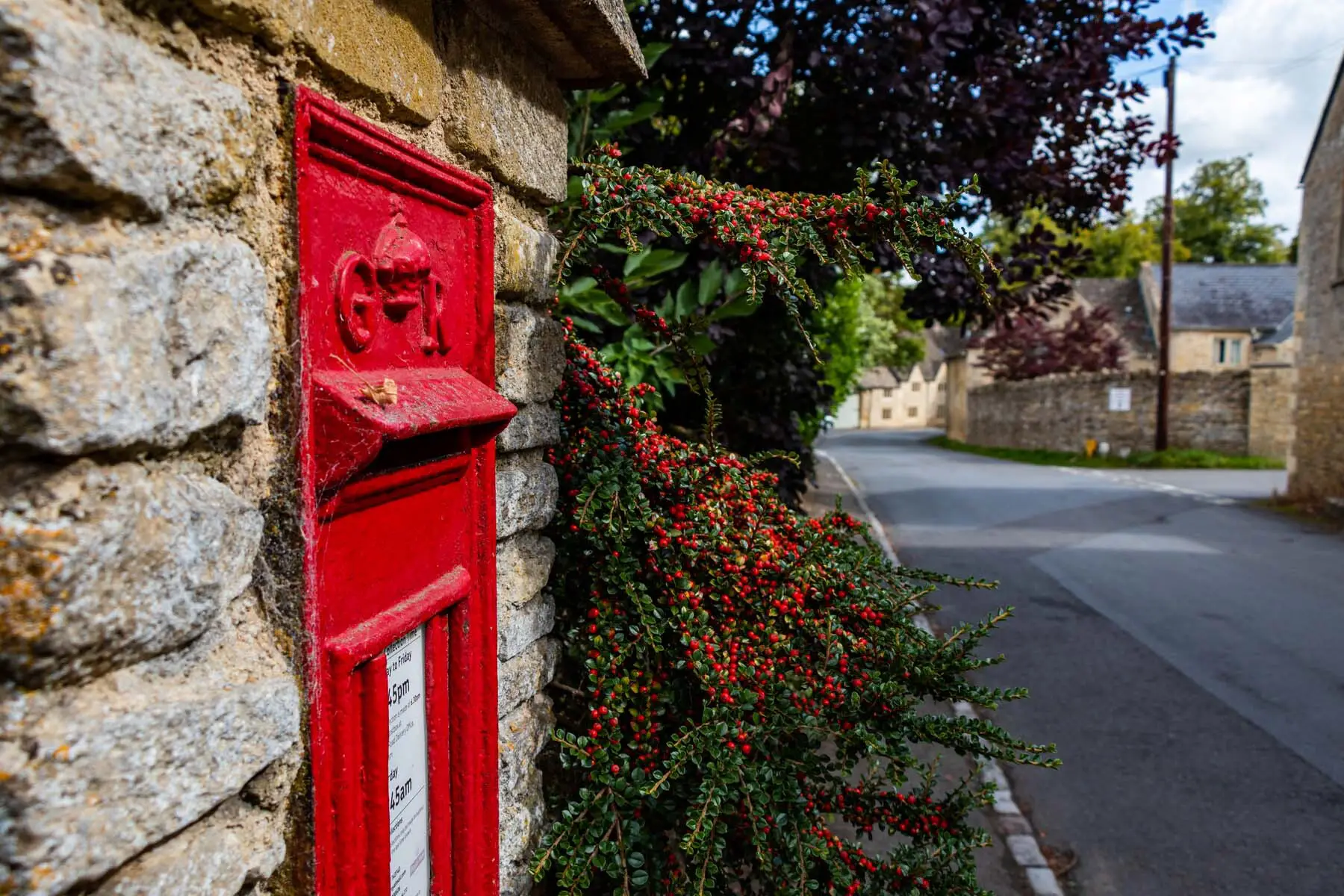
Standalone, roadside boxes are found near shops and other community services. Some boxes are built into walls and buildings, particularly in rural areas. Royal Mail makes collections from postboxes at least once a day, with the exception of weekends and UK bank holidays. Boxes in busier locations will have several daily collections while others may have only one. The next collection is always clearly displayed on the front of the box. To find your nearest pillar box, use the Royal Mail services locator.
Sending mail internationally with the UK postal service
If you need to mail something internationally, you have several options in the UK. The easiest option for many will be to simply visit your local post office. Here, you’ll be able to send letters, documents, parcels, and packages throughout the world. You’ll have your choice of delivery options, including international tracking and signature-on-delivery. There are also more economic options. These are particularly useful if you’re planning on sending larger items overseas, such as packing boxes.
Alternatively, there is an increasing number of other courier and logistics companies providing global delivery from the United Kingdom. These services vary in cost, service, and speed. However, many offer useful doorstep collection services. These delivery companies include:
Receiving postal deliveries in the UK
If you’re waiting for something in the mail, chances are you’ll receive it from a Royal Mail postal worker. Household deliveries happen daily on working days, with Royal Mail aiming to deliver to urban areas by 15:00 and rural areas by 16:00. This does vary in more remote rural areas, including the Highlands and Islands of Scotland. Parcels and other special delivery items (such as tracked deliveries) are also delivered to homes on Saturdays.
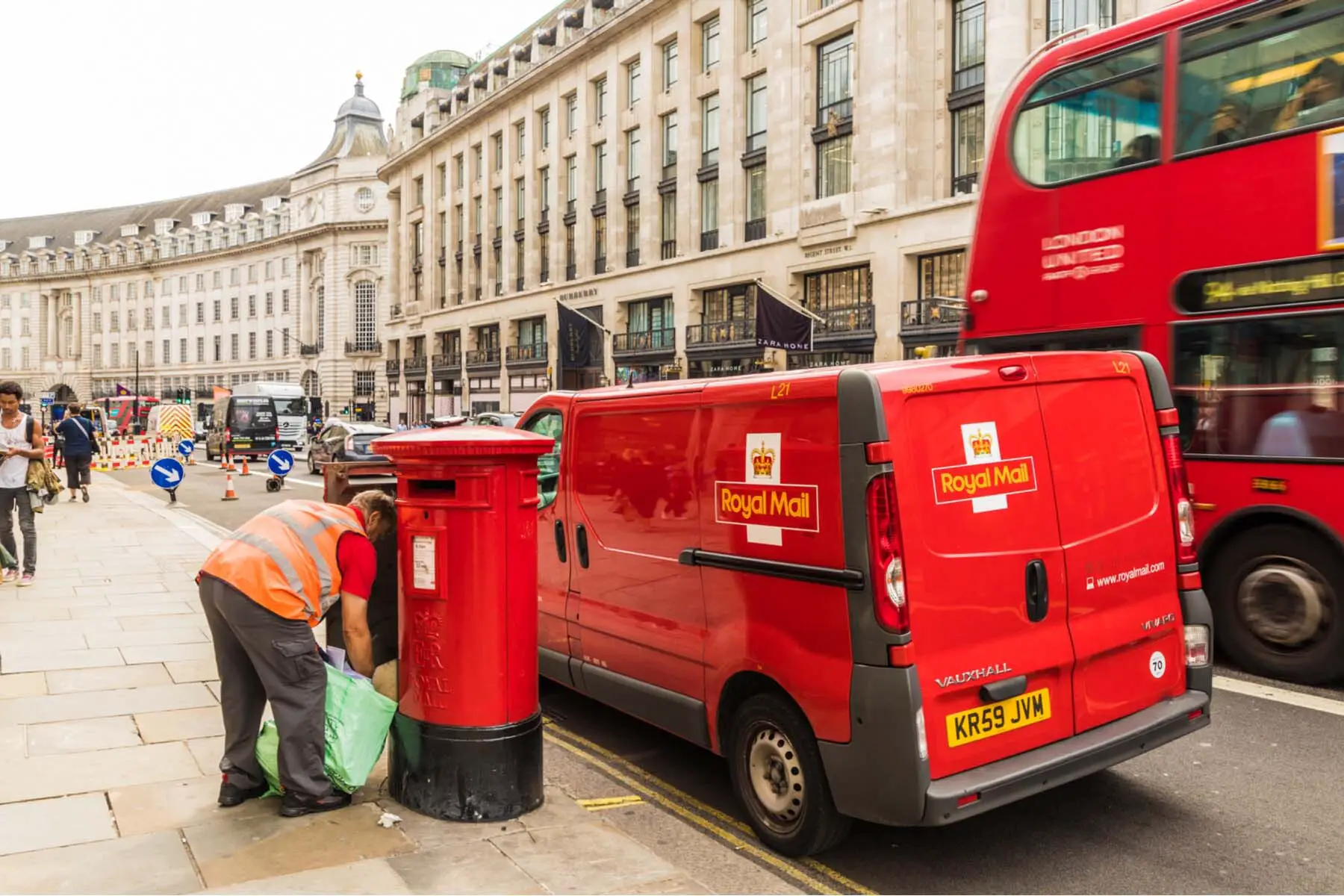
Receiving parcels from overseas
When expecting packages from abroad, most parcels will be delivered straight to your home. Depending on the courier, you may need to collect it at a designated pick-up point in your local town or neighborhood.
When receiving items from abroad, be aware that some goods are subject to customs charges. Should these apply to you, you’ll receive a customs charge from your courier. This will include information on what and how you need to pay. Once you’ve paid this charge, you’ll likely receive your package the next working day.
Mail redirection services
Are you moving house in the UK? Whether you’re heading to a new London neighborhood or moving to one of these great UK cities, you’ll probably need to use the Royal Mail’s redirection services. This means you’ll receive mail addressed to your old home for anything up to twelve months.
Business mail for companies
If you own or operate a company, you’ll probably need to use the UK postal services to stay in touch with contacts and clients. There are several options when it comes to postal services for your business. Postal providers offer a range of services for businesses. These include scalable discounts, international shipping, and even marketing and data cleansing services. For more information on this, visit Royal Mail’s business page.
PO boxes
Should you not want to share your home address with your customers, you may want to consider using a PO box. This ensures your address stays private, which is popular with small business owners and those who live in shared accommodation. Visit the Royal Mail’s information page for more details on PO boxes.
Useful resources
- Post Office – an online resource for all Post Office products
- Royal Mail – find out how to buy, send, and more on Royal Mail’s website
